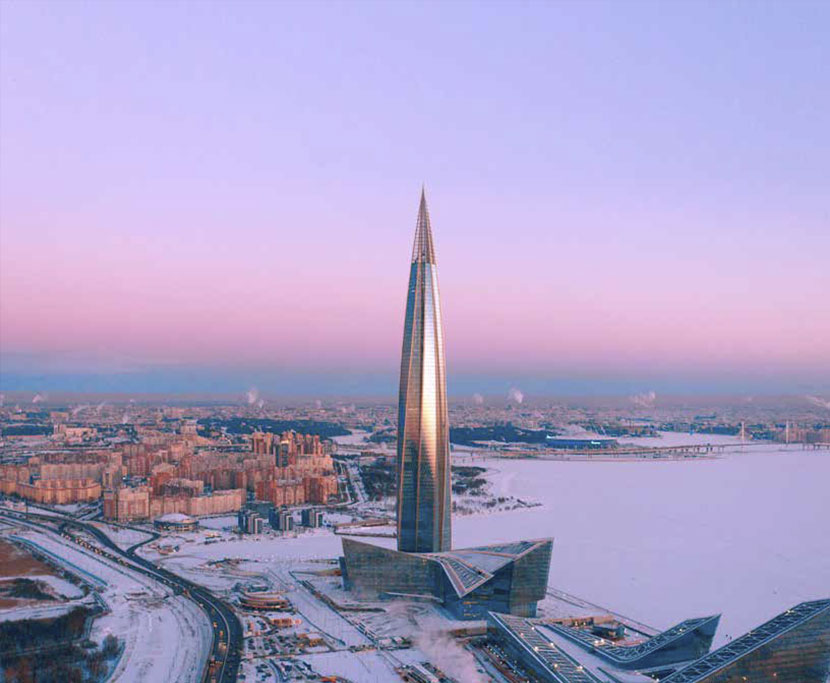Advanced Interlayer Solutions Division Projekte Lakhta Tower
ADVANCED INTERLAYER SOLUTIONS



Resembling a needle, Europe’s tallest building spirals 462 meters into the sky. The ,Star of St. Petersburg‛, as the building is already being called, occupies a 170,000 mÇ footprint on the shores of the Gulf of Finland in the Primorsky District, some 10 km northwest of St. Petersburg’s city center. Designed by the RMJM partnership under Tony Kettle’s direction, the project was managed by ZAO Gorprojekt; and the work planned by Samsung Production.
As a modern business center with many public functions, the building is intended to form the hub of a new downtown and take the strain off the historic city center. The high-rise will serve as the new headquarters of Russian gas producer Gazprom, which is also the client, but on completion, there will also be, among other things, a sports facility, a planetarium, a restaurant, and an amphitheater, where aquatic shows will be staged.
Over 3,000 people and in peak times up to 12,000 people were are involved in the construction proper, with some 600 Russian and international companies and over 20,000 people from 18 countries involved in the project’s full realization. Construction got underway in 2012. In October 2018 the facility was comissioned.
Anyone who closely followed the 2018 World Cup in Russia had the opportunity to admire the new Lakhta Tower due to its proximity to the St. Petersburg World Cup stadium, with the city’s new landmark being captured by the cameras of the world’s broadcasting stations time and again.
Only shortly before the start of the World Cup did the fitters from façade constructor Gartner − aided by roped industrial climbers − install the last of the 3 x 4 m glass panes at heights of over 300 m, without helicopter assistance. This oversized needle, with its curved glass façade, now stands majestically over the Gulf of Finland, welcoming approaching cruise ships from afar.
Glass atriums, each two storeys high on all five exterior sides, can be naturally ventilated and, coupled to other energy-saving technologies, make the tower a truly ‚green building‛, which got a Platinum certification in December 2018. The highly thermally insulated façade, its improved use of daylight – thanks to panoramic glazing − and natural ventilation play key roles in this respect. The Lakhta Center is already one of the world’s tallest buildings capable of being naturally ventilated.
Application
Region
Interlayer
Architect
Laminator
Engineer

Keep up with the very latest news in laminated glass innovations and procedures by subscribing to our free Laminated Glass News.
Subscribe here